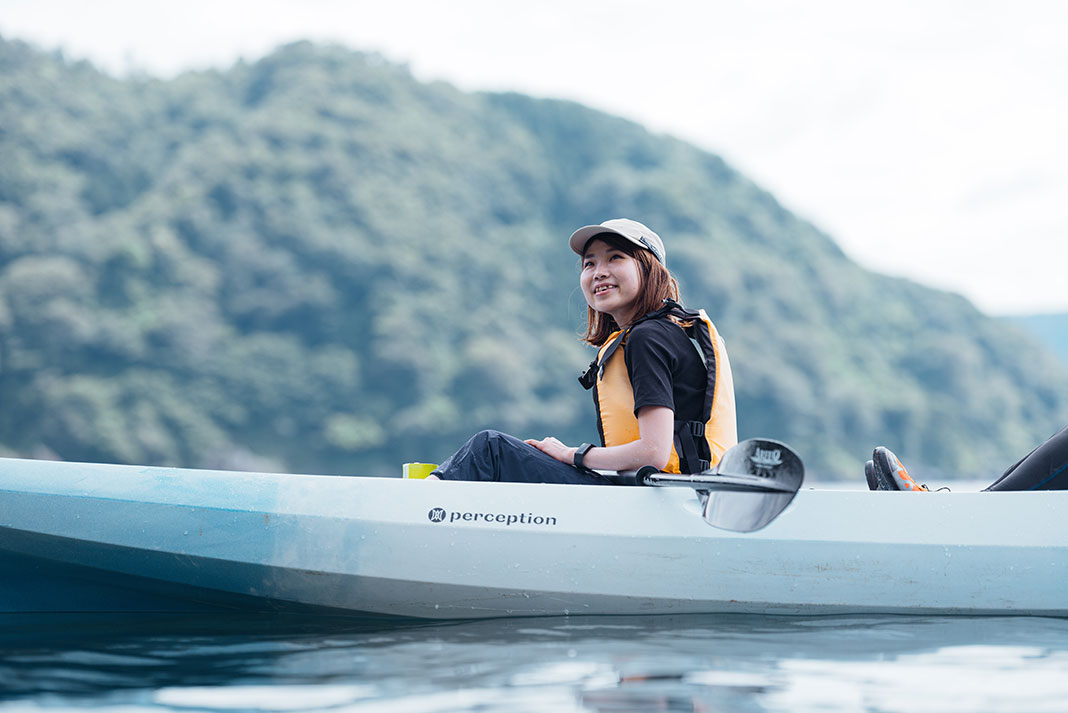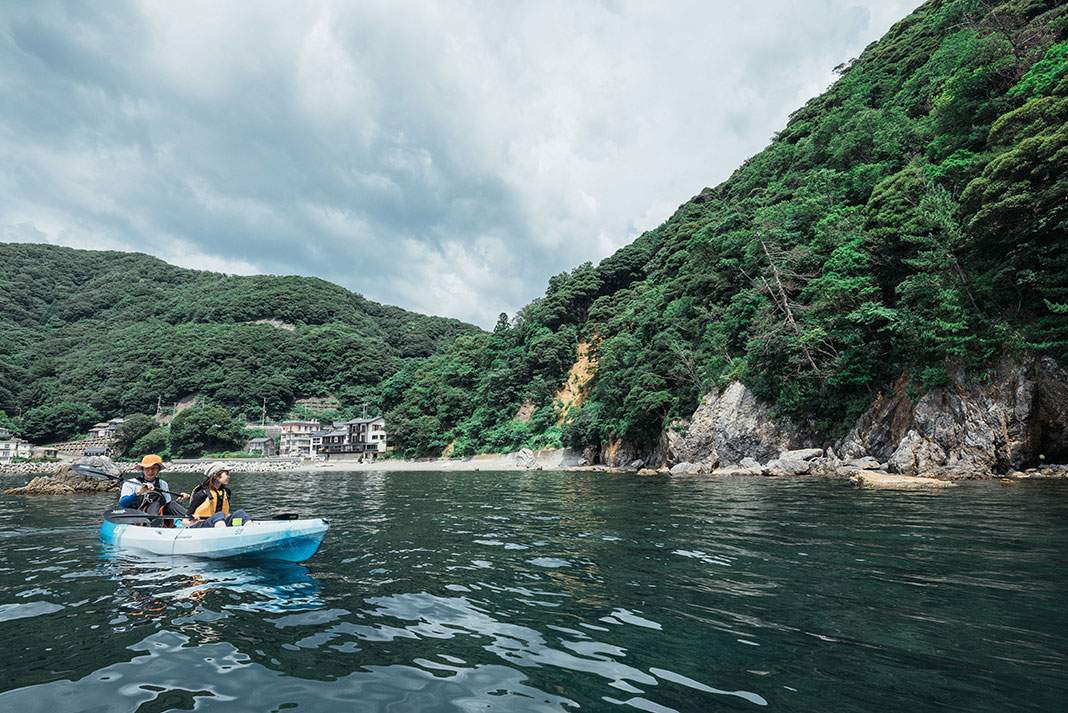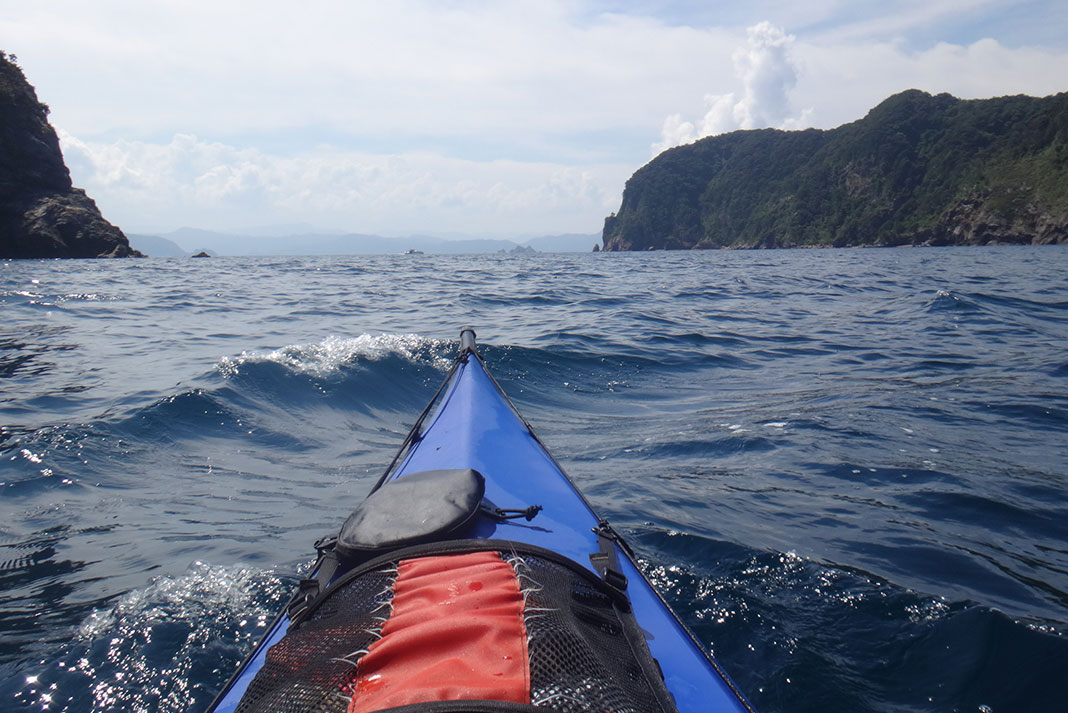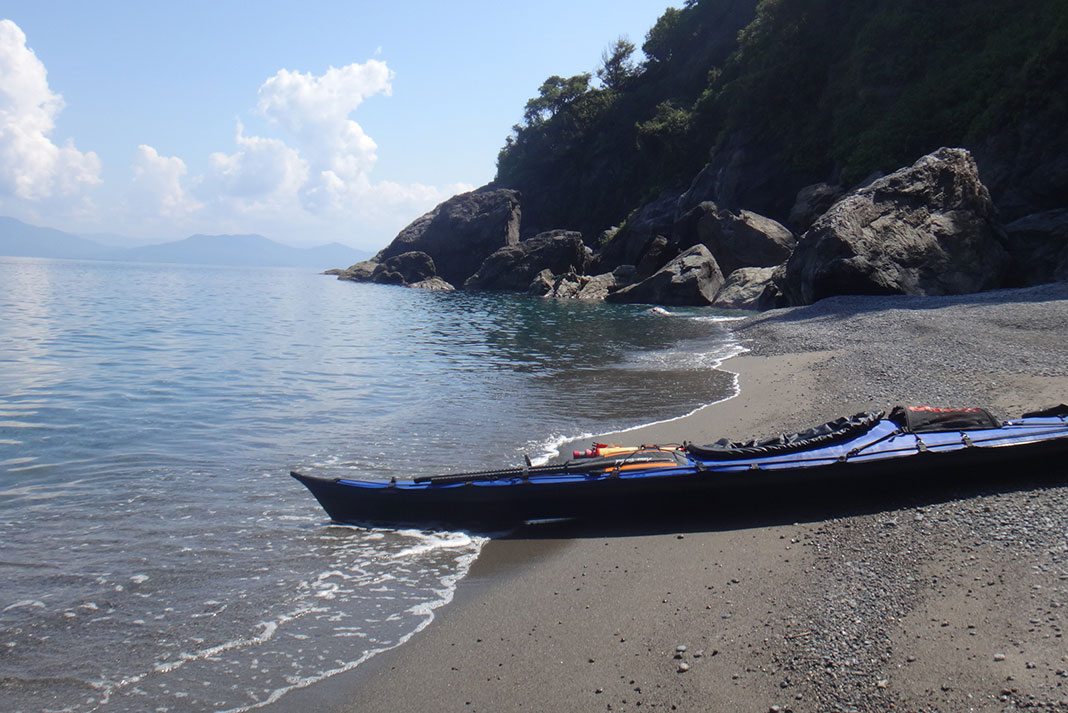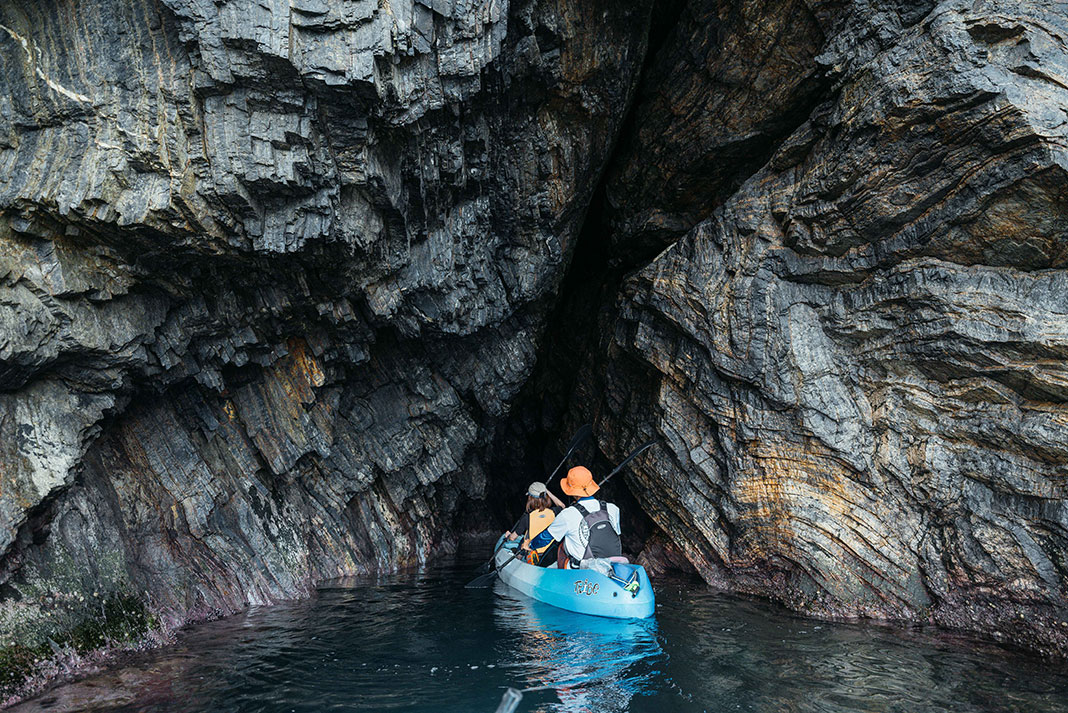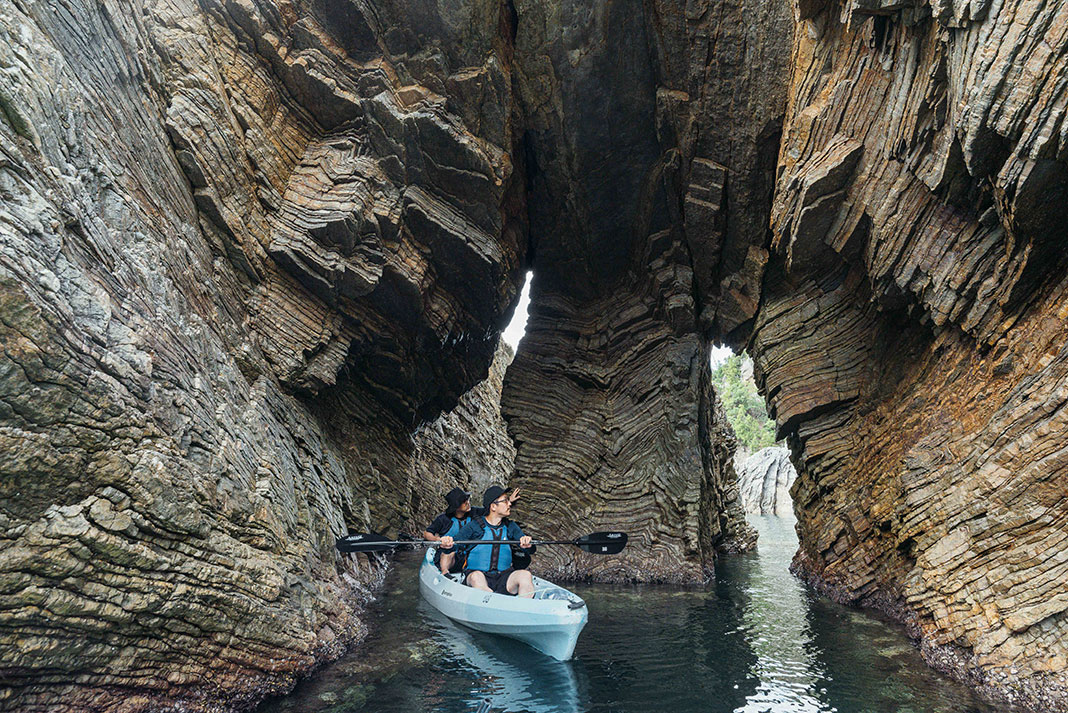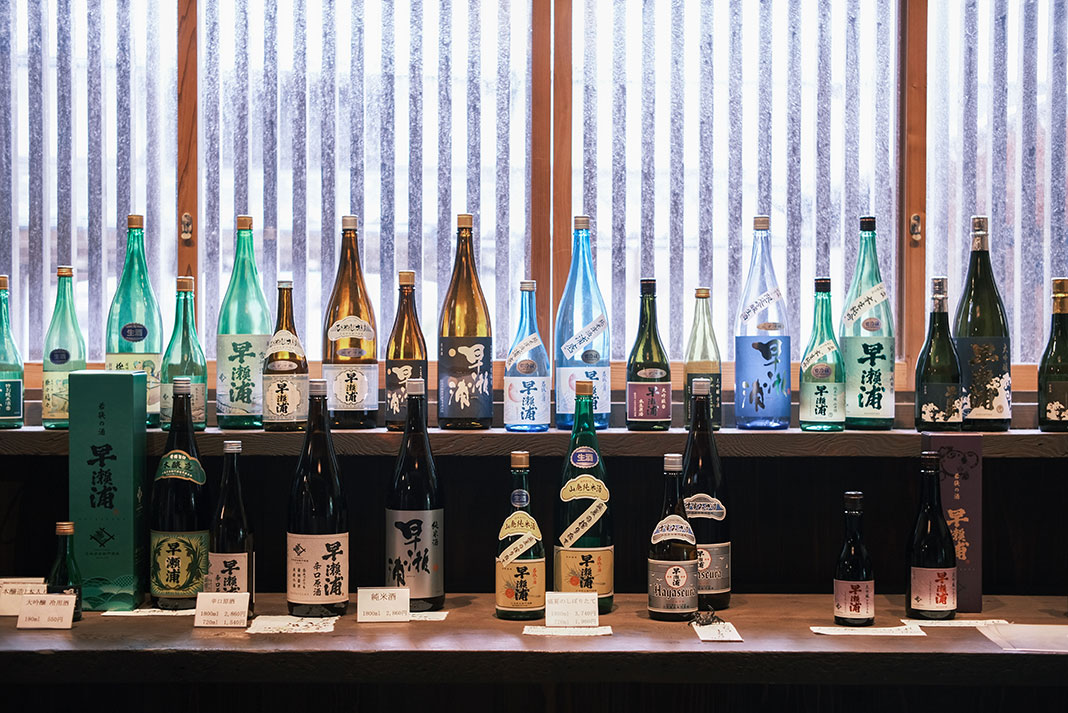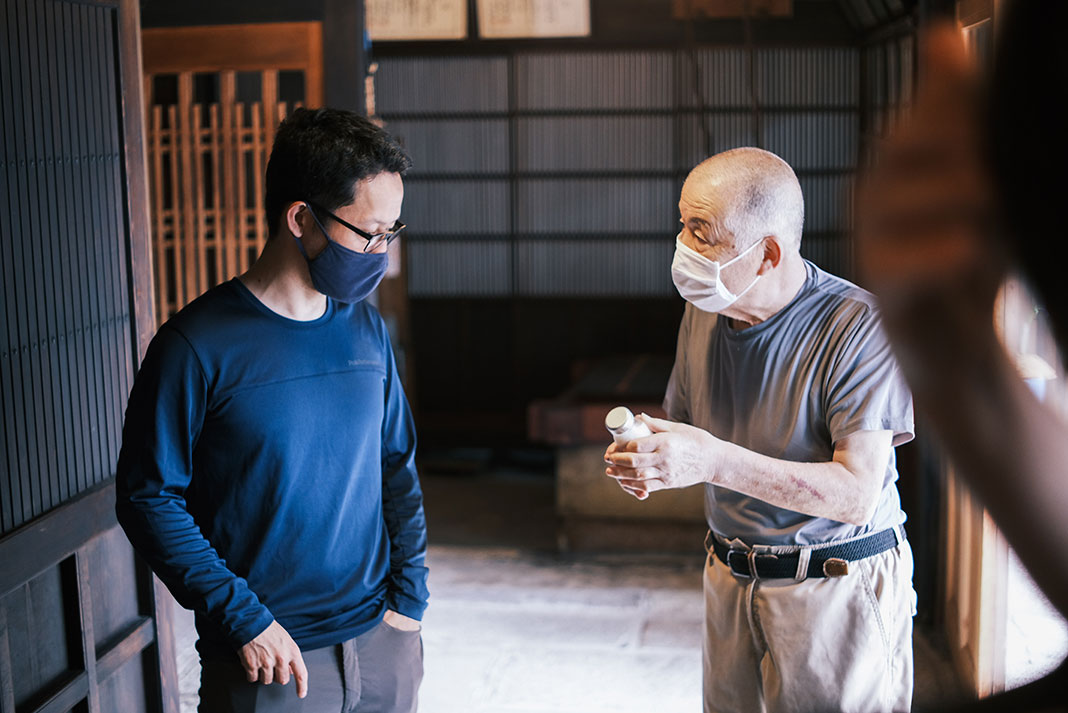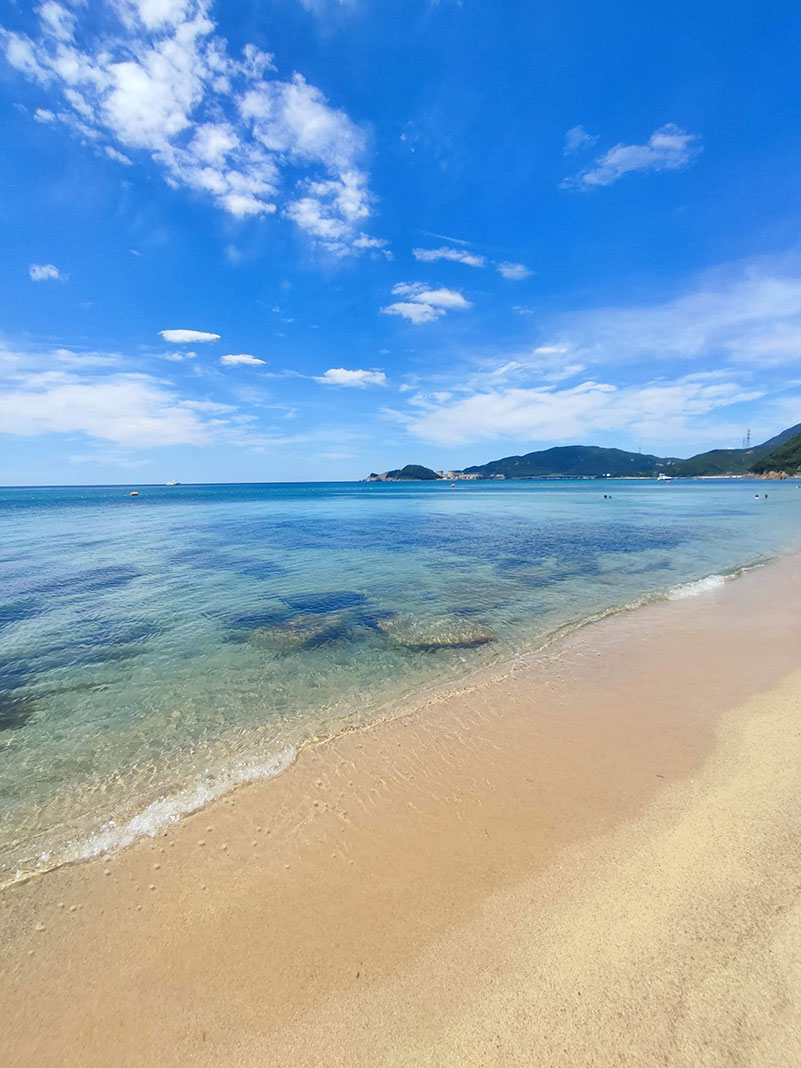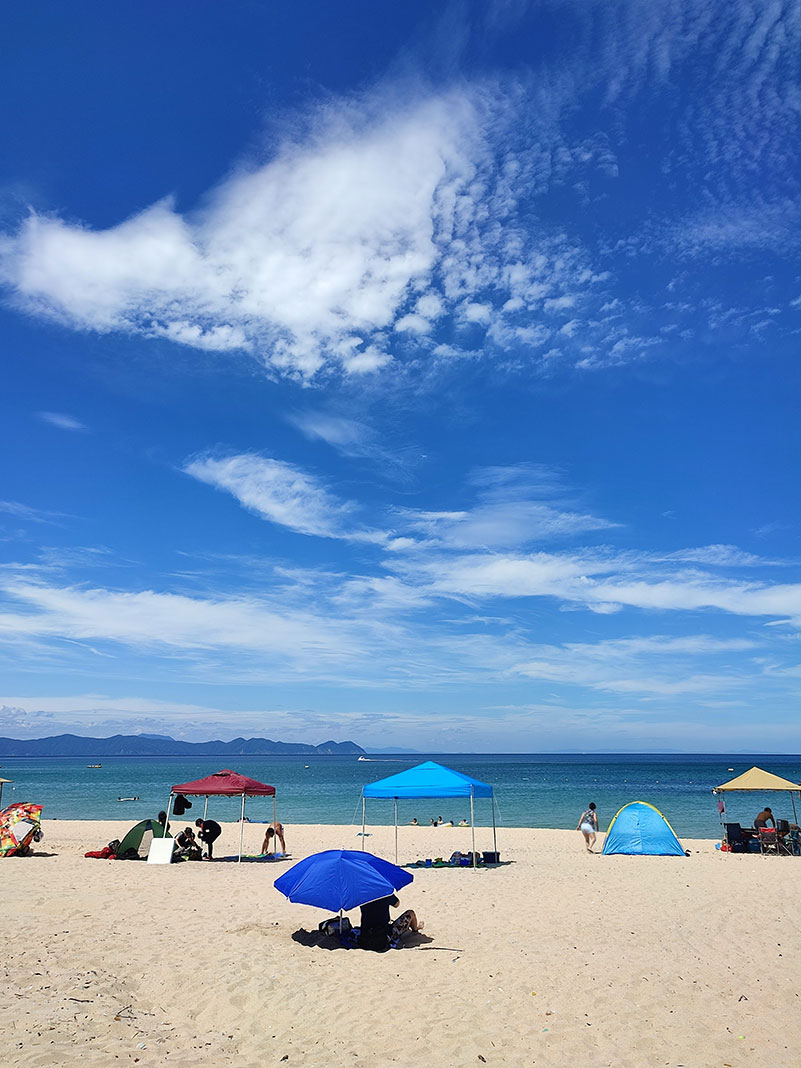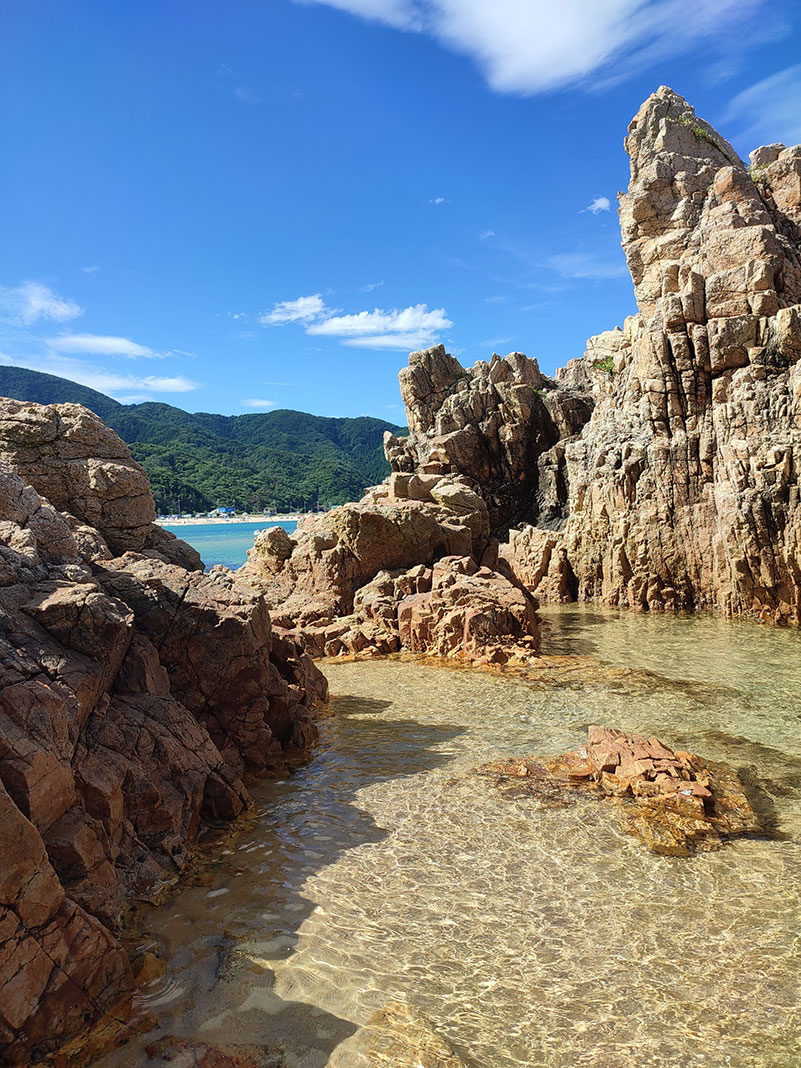Taking a look at Japan on Google Maps, you have to zoom way in—then zoom in again before the town of Wakasa will appear on your screen. Fitting, considering a visit to this dot on the map will give you a more detailed and personal look at Japanese life outside the city centers. It’s no secret that more authentic experiences are to be had the more off the beaten path you go. And that’s exactly what’s on offer in Wakasa, tucked in an unassuming bay within Wakasa Bay on the Sea of Japan.
Huddled along the shore are five interconnected lakes: the Mikata Five Lakes. These, along with the intricate coastline, gave birth to the culture of traveling by boat in the Wakasa area. The few remaining boathouses show how people lived, relying on their vessels to carry them to their farmland. Some of these boathouses were in use as recently as 40 years ago, though there’s evidence of humans inhabiting the area since the Jōmon period (14,000–300 BCE). It’s only natural, then, to take to the water while you are here—to follow in the wake of those who shaped the area, and see the landscape from their perspective.
Plus it’s a dazzling place to explore. Mikata Five Lakes is the collective name for Lake Mikata, Suigetsu, Suga, Kugushi and Hiruga. Each of the lakes have different depths and salinities, creating different color tones and earning them the nickname the Five-Color Lakes. Picture sparkling gemstones nestled among verdant, rolling hills. Now picture yourself skimming across them, paddle in hand.
Paddling tours in the area are offered by Asoboya, a company that runs out of the Pamco Hotel.
Tours are held on Wakasa Bay and the Mikata Five Lakes, with a variety of experiences available on both, depending on season, time of day and your preferred trip length. Choose between endless horizon or 360-degree mountains, the unpredictability of coastal environments or the security of sheltered waters, true seclusion or cultural immersion. And that’s just the beginning.
What other experiences await on these paddling excursions? Find out why you can’t miss kayaking in Wakasa below.
You can get underwater views on a clear kayak
Wakasa Bay is home to some of the clearest waters along the Sea of Japan coast. Get the full experience of the area not just by looking around you, but by peering into the depths. On a clear kayak you’ll feel like you are truly at one with the water, and will be able to gaze below you at the vibrant marine life.
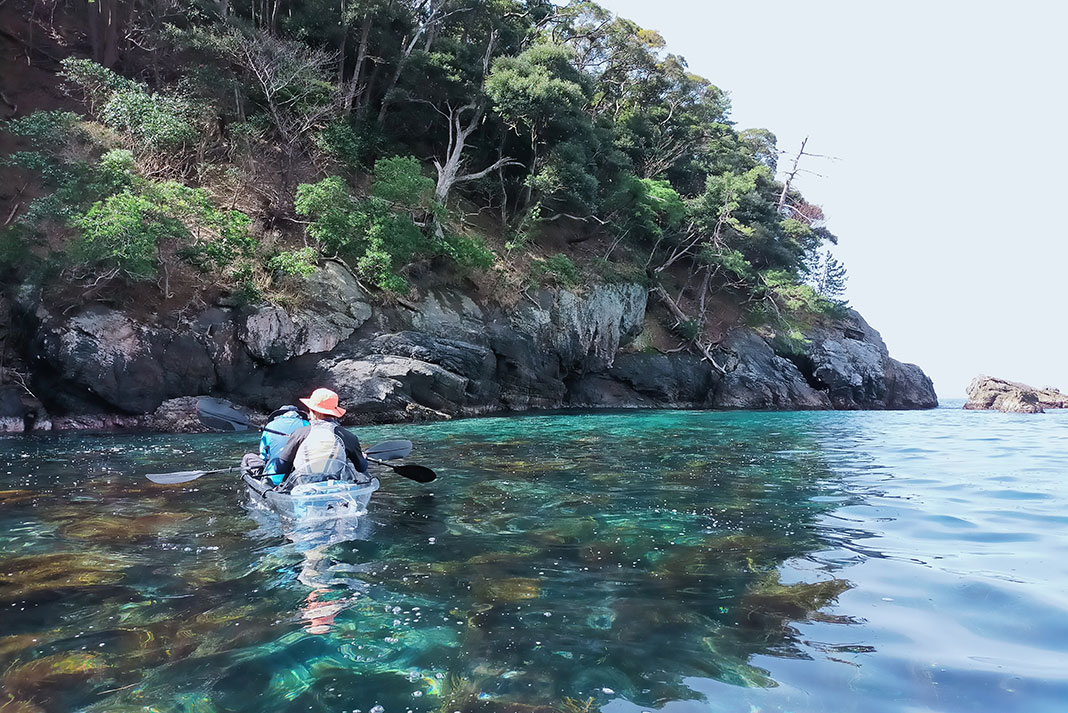
Asoboya’s Clear Kayak Tours are three hours in length and run from the end of April until the end of September. Also on the itinerary are a stop at a secluded beach, snorkeling and underwater fishing—a unique kind of fishing where participants wear snorkeling gear and hold the fishing line with their hand, the former allowing them to see the fish interacting with their bait and the latter enabling them to easily manipulate their tackle in response.
Where to stay
Stay onsite at the Pamco hotel for easy access to their sea kayaking tours.
Where to eat
Visit the Drive-In Yoshida for their squid bowl, a popular dish in the Wakasa area.
How to get there
It takes 3.5 hours to get to Wakasa from Tokyo. The Shinkansen, or “bullet train,” is scheduled to be extended to the town of Fukui, an hour up the coast from Wakasa, in 2025. From Osaka it takes 1.5 hours by train. From Kyoto it takes about an hour by train.
Paddling season
The paddling season is typically from April to November.
You can paddle among the cherry blossoms
Each spring, millions of people from around the world travel to Japan with the express purpose of viewing the cherry blossoms in bloom—an activity that’s referred to as hanami. There are more than 600 places throughout the country where you can view cherry blossoms, with most people descending on parks, temples and shrines in the big cities of Tokyo, Nagoya and Osaka. If you want to escape the crowds, however, and experience the beauty of cherry blossoms in a unique way, take a kayak tour on the Mikata Five Lakes.
Cherry Blossom Kayak Tours typically run in April, but of course depend on when the cherry blossoms are in bloom. They are two hours in length and involve a quiet paddle around Lake Suigetsu—the largest of the lakes—as well as Suga Lake and Kugushi Lake. Take the tour in March for an equally beautiful experience. More than 80,000 plum trees surround the lakes and bloom in red and white each March, peppering the area in a sweet fragrance. Either tour will allow you to drift quietly beneath colorful blossoms, enhancing the natural beauty of the area.
For an even rarer experience, take a Night Cherry Blossom Kayak Tour. These tours only run for eight days a year, typically at the beginning of April. You’ll paddle across the calm waters of Lake Suigetsu in the dark, taking in the magical view of illuminated cherry blossom trees along shore.
You can drink tea on a secluded beach
While many kayak tours like to pack in the sights and keep a fast pace, Asoboya believes in giving you space to enjoy the moment. Yes, you’ll cover distance and see some spectacular places along the Wakasa Bay coast, but taking a pause and enjoying the view is built into the itinerary. Partway through the paddle, the group will stop at a secluded beach. Here, your guide will make tea over an open fire or on a campstove for you to sip while taking in the surroundings.
This experience is available on any of the summer, daytime tours Asoboya offers on Wakasa Bay.
You can stargaze in the middle of a lake
Truly amazing stargazing is dependent on two things: a lack of buildings and trees so you can see as much of the sky as possible, and a lack of light pollution so the stars in the sky you do see shine all the more clearly. Taking a Night Kayak Tour on Lake Suigetsu meets both those conditions.
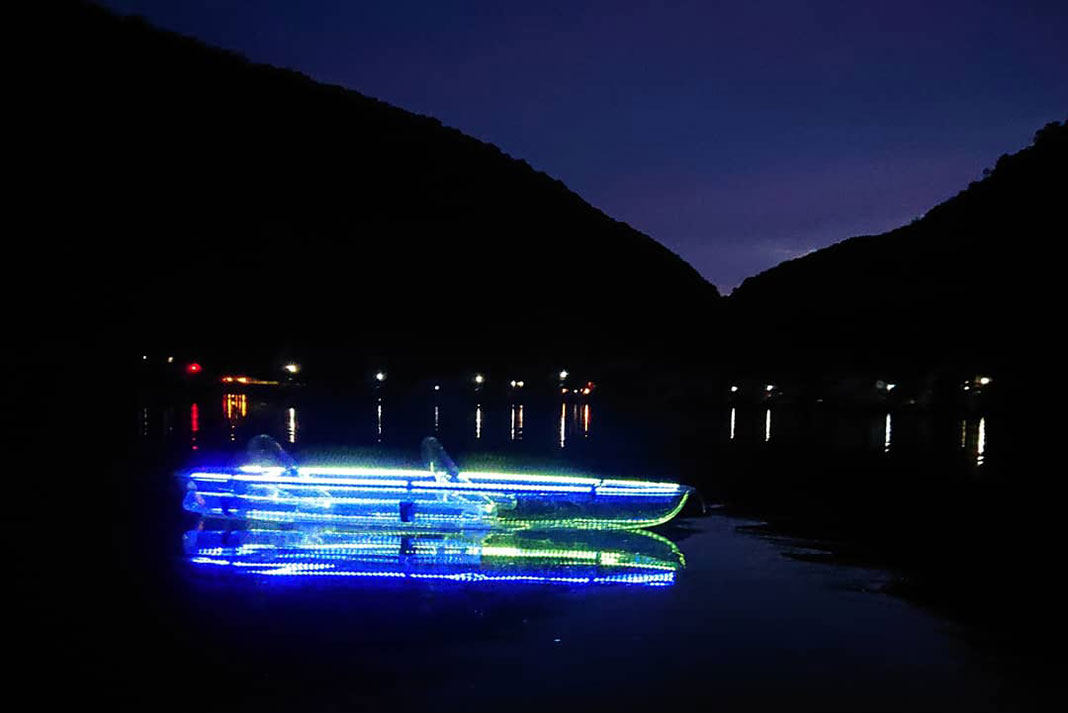
Paddle clear kayaks lit up with colorful LED lights into the middle of the lake; once there, turn the lights off and tilt your head back. Being away from the shore will give you a totally unobscured view of the night sky and likewise being situated so far outside major cities will make light pollution minimal. What follows is a display of millions of stars twinkling in the velvety, black sky—gaze long enough and you just might see some shooting stars.
Night tours are held on new moon and full moon days—the former providing the best stargazing because there will be no light from the moon blocking out the stars, the latter providing the best paddling as the entire lake will be visible under the light of the moon. Night tours can be arranged on other days as well, upon inquiry.
You can paddle through rock tunnels and visit sea caves
If you aren’t on the lookout as you paddle along the cliffs that line Wakasa Bay, you might miss them. Hidden in the cliff faces are entrances to rock tunnels and caves, carved out by the waves over thousands of years. The rock walls have intricate and unique designs, sculpted by Mother Nature herself. You’ll have the opportunity to paddle inside and through these caves and tunnels while on either of the three- or five-hour kayak tours on Wakasa Bay.
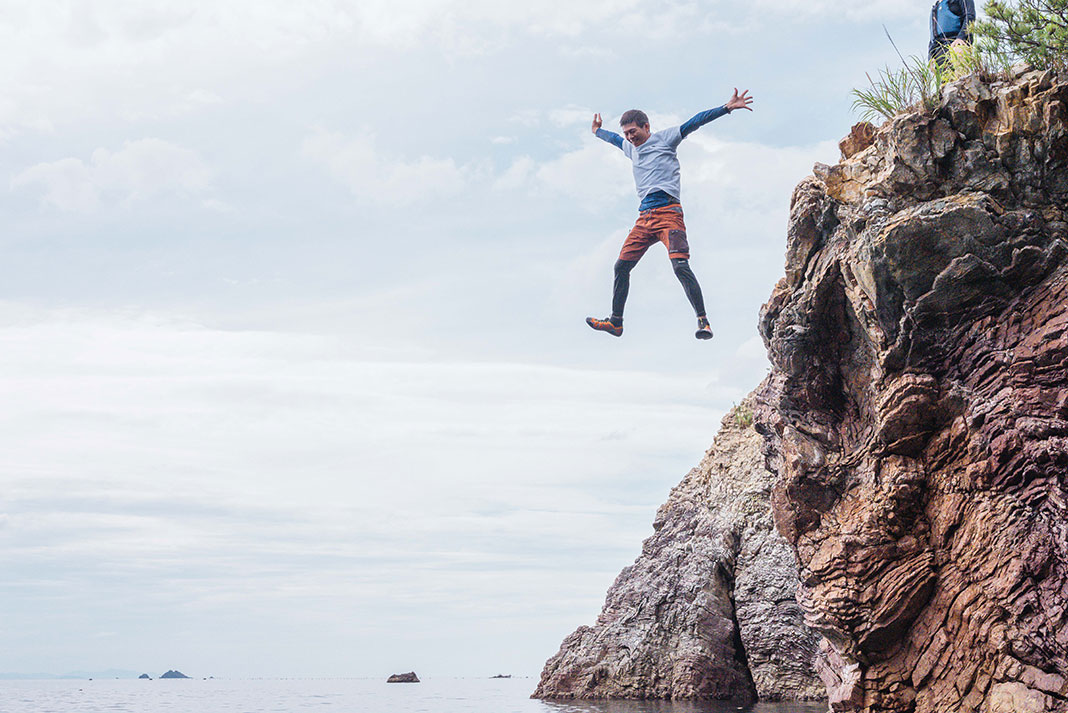
You can go cliff-jumping
Feel the exhilaration of jumping off a cliff high above the water while on a sea kayak tour on Wakasa Bay. Partway through the three- or five-hour tour, you’ll take pause for the chance to scale the rocky shore and cannonball (or whatever aerial technique you so choose) into the crystalline, refreshing waters below.
You can paddle through an autumn wonderland
Fall in Wakasa is a magical time of year, when the leaves change to vibrant reds, yellows and oranges, turning the hillsides into a colorful display that reflects in the calm waters of the Mikata Five Lakes. The color change occurs throughout November and December, making for a beautiful backdrop to a kayaking trip. Take the two-hour kayak tour on Lake Suigetsu, which includes a stint on the Urami River and a break for tea along the shore, the perfect way to warm up on a crisp autumn day.
Explore a jungle
Enter into a world apart when you paddle the Urami River, a waterway connecting lakes Suigetsu and Kugushi. A canopy of low-hanging trees and vines overhead and a narrow path between the banks make paddling the river feel like exploring an ancient jungle. No wonder it’s sometimes referred to as the Wakasa Mangrove. You’ll have the opportunity to paddle the Urami River while on a three-hour kayaking tour that also includes time on the lakes on either end, and occasionally Lake Suga as well.
You can explore an area rich in adventure, history and culture
Miyake Hikouemon Brewery
Be sure to stop in at the Miyake Hikouemon Brewery, a sake brewery established 300 years ago. You’ll be able to talk to the 11th-generation owners while sipping on their refined beverage.
Varve Museum
Lake Suigetsu isn’t just a pretty lake—far below the surface is a natural phenomenon that’s of global importance. Sediment that accumulated over 70,000 years formed stripe-like patterns—called varves—on the lake floor. These varves are used to measure the age of other archeological and geological finds, as well as provide clues as to how the climate and environment have changed over time. At the Varve Museum, the 70,000-year-old, 45-meter varve—the world’s longest—is exhibited as stained glass. You can also view other exhibits here that explain the dating process and formation of the varves.
Waterfall climbing
Looking for an adventurous experience that’s unique to Japan? Sawanobori, or “stream climbing” or “shower climbing,” involves climbing and descending waterfalls. Yes, you’re going to get wet. PLUSWild offers tours on some of the most beautiful and wild waterfalls in Japan, giving you the chance to be fully immersed in their majesty.
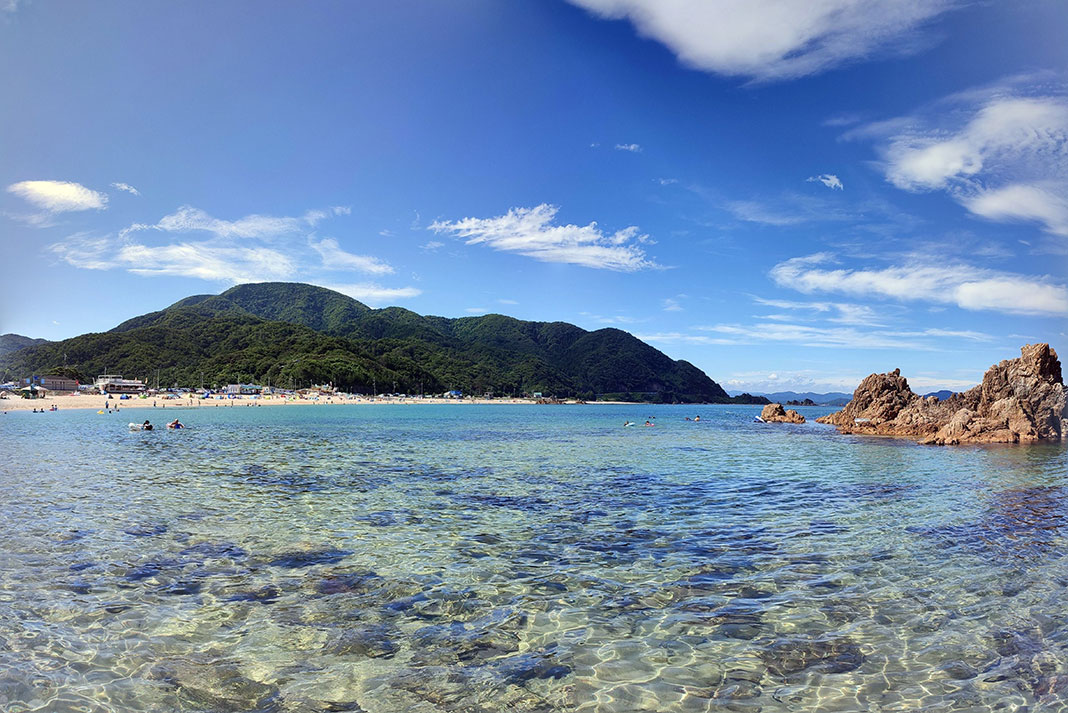
Surfing
Never tried surfing? Take lessons at Familiar Beach Side Village on Wakasa Bay. They’ll provide you with a two-hour experience. Included in the price are your wetsuit and surfboard, as well as lunch and hot shower after your session.
Beaches
Wakasa Bay is home to some of the best beaches in Japan, the most famous being Wakasa Wada Beach in Takahama. Suishohama Beach in Mihama is also well-known for its clear waters. However, any of the beaches along Wakasa Bay will provide you with crystal-clear waters, idyllic stretches of sand and beautiful views of the hilly shoreline.
Rainbow Line Summit Park
The best view over the Mikata Five Lakes is found at Rainbow Line Summit Park. The Rainbow Line is an 11-kilometer toll road spanning from Mihama to Wakasa, and leading to the base of the cable car that will take you up to Summit Park. From the top, you’ll be able to take in the incredible view, and appreciate why the Mikata Five Lakes are recognized as a wetland of global importance under the Ramsar Convention.


